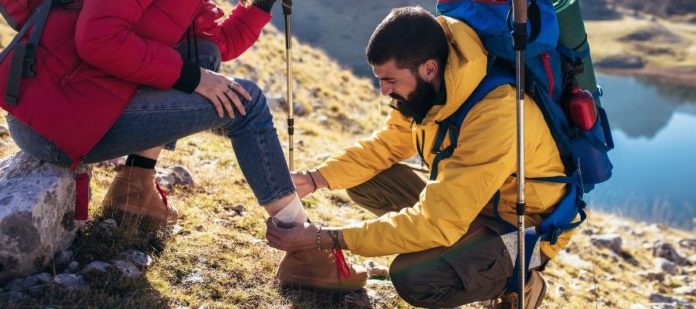Outdoor adventures can lead to physical injuries that require immediate care. In some cases, first aid is enough to effectively treat the problem. In other cases, you’ll use first aid to prevent the problem from worsening, then see a doctor as soon as possible for treatment. Every outdoor enthusiast should know these first aid tips to prepare for possible mishaps.
Bring a First Aid Kit
Your ability to give effective aid depends on how well you prepare, and the items you must bring on your trip depend on your activity type. For example, when creating a checklist of items for off-roading, you should add vehicle recovery gear in case you or another vehicle gets stuck.
No matter what you do outdoors, it’s wise to have a well-stocked first aid kit. Fortunately, most outdoor injuries are minor and easy to take care of with a first aid kit.
You can buy a premade kit or make your own. Your kit should include the following items.
- Bandages
- Gauze pads
- Sterile wipes
- Antiseptic creams
- Pain and anti-inflammatory medication
- Hydrocortisone cream to relieve itching and swelling
- Antibiotic ointment
- Sunburn relief creams (pack sunscreen too!)
- Eye drops
- Hand sanitizer
- Tweezers, scissors, and safety pins
Additionally, everyone should make sure to bring their prescription medications. Always check your first aid kit before you go on a trip and replace missing or outdated supplies.
Treating Sprains and Muscle Strain
Falling, twisting, or the impact of a collision with another object can cause ligament sprains and muscle strain. Whether hiking, fishing, camping, off-roading, or otherwise enjoying the great outdoors, you should know how to treat these common injuries.
Follow the RICE method of treatment for sprains and strains.
- Rest: Do not use or move the injured body part.
- Ice: If you have an ice pack, wrap it in cloth, then apply the pack to the injury for 15–20 minutes at a time every 2–4 hours. Do this for up to 48 hours from the time of injury.
- Compression: Wrap a bandage around, above, and below the injury site. The bandage should be snug but should not cut off circulation.
- Elevation: Raise the injured body part above the person’s heart.
Stopping Severe Bleeding
Knowing how to stop severe bleeding is one of the most important first aid techniques that outdoor enthusiasts should know. The top priority is to stop the bleeding. Start by removing clothing or debris around the wound.
To stop the bleeding, press a sterile bandage or cloth firmly on the wound. Do not put direct pressure on an eye or an embedded object. Apply constant pressure until the bleeding stops.
Bind the wound with a thick bandage or cloth. If blood sleeps through the wrappings, do not remove them. Instead, add more layers and continue pressing firmly on the area. Call 911 for help with severe bleeding and get the injured person to an emergency room quickly.
























